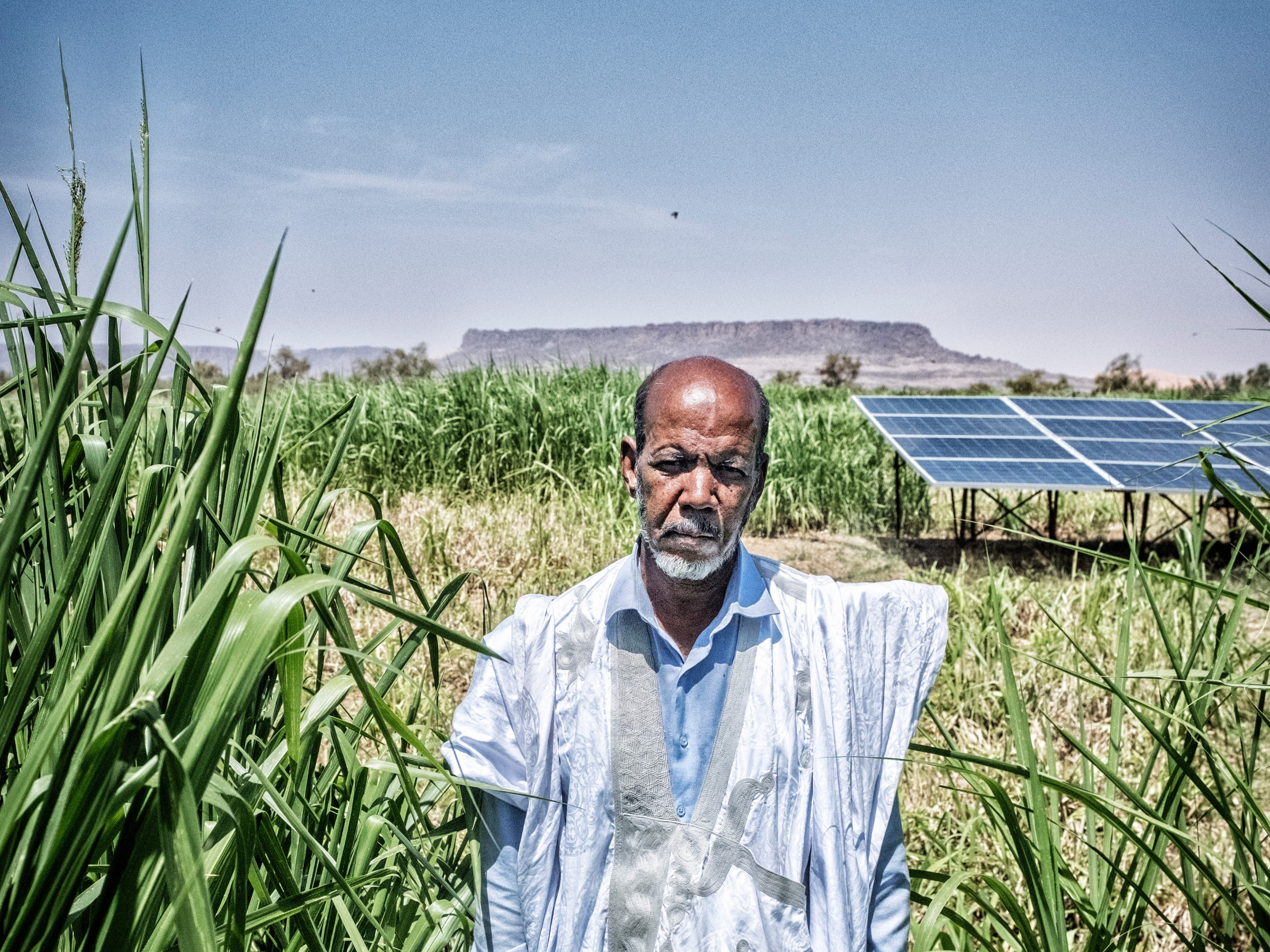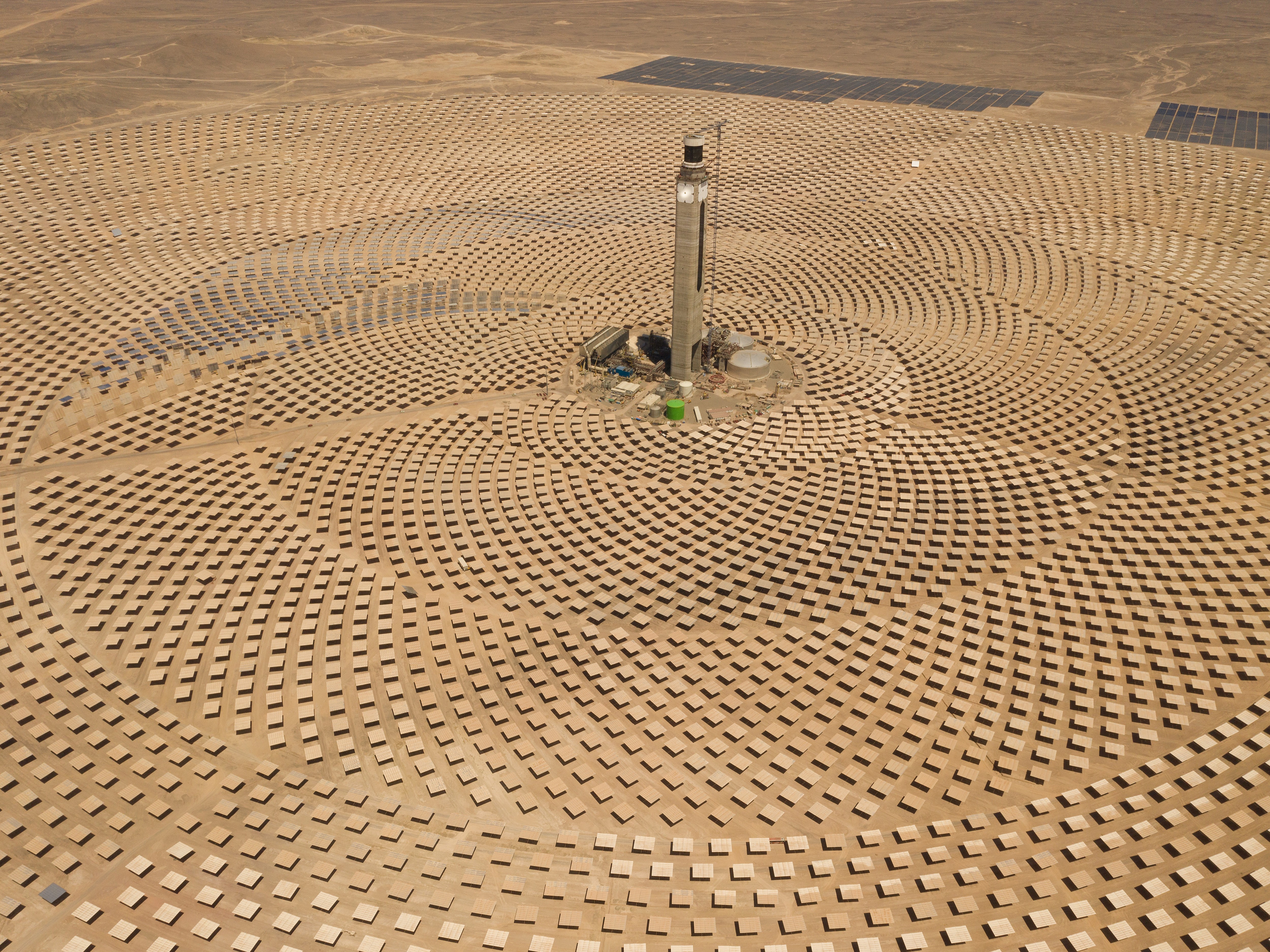Share post now

global
The Alliance Sud magazine analyses and comments on Switzerland's foreign and development policies. "global" is published four times a year (in german and french) and can be subscribed to free of charge.
Impact Investing
21.03.2025, Financing for development
Advocates of impact investing portray it as one way to help fund both the Sustainable Development Goals and climate targets. In a recent study, Alliance Sud took a closer look at this contribution, which to date remains rather limited.

Few investments are made in the poorest countries, as they are considered too risky. A farmer in Guerou, Mauritania, uses solar panels to irrigate his pastures. © Tim Dirven / Panos Pictures
It is no secret that Switzerland aims to become a leader in the realm of sustainable finance. At the heart of "sustainable" finance is impact investing, with a twofold ambition, namely, ensuring "market-based" financial returns, while also helping to resolve global social and environmental challenges. Laid out for the first time in 2007 by the Rockefeller Foundation, this approach has since gained many public and private followers in the international financial system; their shared objective is to "mobilise" private capital in order to attain the Sustainable Development Goals (SDGs). Some even see this as a way of cushioning the cuts to Official Development Assistance (ODA) budgets. Yet, there is a yawning financing "gap" for achieving those goals. According to UN Trade and Development (UNCTAD) based in Geneva, developing countries are grappling with an annual funding gap of more than USD 4000 billion. Of this amount, some USD 2200 billion are needed to fund the energy transition alone.
To put things into perspective, at the end of 2023, Swiss banks – the leaders in cross-border wealth management – were managing some CHF 8,392 billion. Hence the somewhat simplistic question: what portion of this wealth could be invested in developing countries to fund the SDGs?
In its “Sustainable finance action plan”, the Federal Council aims to extend access to impact investing to include private capital, going beyond just private foundations and family offices, and this "on a large scale" in order to fund projects that make a "measurable and credible contribution to the aims of sustainability". In parallel, it also aims to create new economic outlets for Switzerland's asset management industry. In other words, impact investing is to be brought out of its niche and made accessible and attractive to institutional investors, including pension funds, which are seeking, or must secure a financial return acceptable to the market.
In parallel, Switzerland's international cooperation funds – which Parliament reduced in December last, let us recall – are being deployed, as part of blended finance, to reduce investment risks and so render impact investing financially more attractive. The hope is that this risk reduction will have a "demonstration effect" and attract the aforementioned institutional investors on a larger scale.
To examine the plausibility of these expectations, Alliance Sud used a recent study to present Switzerland's impact investing market, that is to say impact investing managers based in Switzerland and deploying capital in developing countries. This market comprises some 18 players managing almost USD 15 billion in assets. Of this amount, some USD 11 billion comprises "private" assets, in other words investments in shares and bonds issued by private enterprises in developing countries – in contrast to "public" enterprises, which are listed on the stock exchange.
To put this figure into perspective, this amount represents less than 0.6% of the global volume of "sustainability-linked investments" (according to the definitions applied by the Swiss Sustainable Finance association), or 0.116% of the total volume of assets under management (AuM) by Swiss banks at the end of 2023 (the roughly CHF 8400 billion mentioned above).

Countless European banks are involved in low-risk, high-return projects such as the Cerro Dominador solar power plant in the emerging nation of Chile. © Fernando Moleres / Panos Pictures
This market is highly concentrated, with its three leading players – responsAbility, BlueOrchard and Symbiotics, now all foreign-owned – controlling 80%. In regional terms, these investments are concentrated mainly in Latin America and the Caribbean (24%), and also in Eastern Europe and Central Asia (20%), given the relative political and economic stability and an investment-friendly environment. Sub-Saharan Africa, on the other hand, receives only 13% of overall investments, while the Middle East and North Africa (MENA) receives a mere 2%, reflecting less attractive investment conditions and risks perceived as too high in these regions.
One half of impact investing is concentrated in 10 countries. India heads the list with 15% of overall exposure, followed by Cambodia, Georgia, Ecuador and Vietnam. All told, 35 countries account for 85% of the investments (taking into account only countries with at least 1% exposure). As of 2025, only 14 of these 35 countries are priority countries for Swiss international cooperation. In income terms, one half of them consists of upper middle-income countries. Only four are least developed countries (LDCs), i.e., Cambodia (6%), Bangladesh (2%) – countries from which the SDC has announced its withdrawal as of 2025 following budget cuts – Tanzania (1%) and Myanmar (1%).
The Swiss impact investing market is also highly concentrated in terms of sectors. Microfinance dominates the market, accounting for about half of total assets under management. The two sectors of microfinance and SME development account for more than 80% of investments, reflecting their financial performance. The sectors of food and agriculture as well as climate and biodiversity receive significantly less investments – with 10% and 4% respectively – despite their substantial financial needs. The "social sectors", including housing, water supply, healthcare and education, together attract less than 2% of the capital. This is due mainly to the fact that these sectors generally do not offer attractive financial returns and are often managed by governments as public goods.
The Swiss impact investing market therefore tends to be concentrated in regions and sectors that offer lower risks and higher financial returns. This reflects a broader trend towards "safe" investments, which does not necessarily address the more urgent challenges of sustainable development. In its conclusions, the Alliance Sud study underlines the fact that impact investing obviously cannot by itself offset the deficit in funding for achieving the SDGs. It is therefore crucial to prioritise the mobilisation of domestic resources, the fight against illicit financial flows and the maintenance of substantial official development assistance for the poorest countries.
Share post now

global
The Alliance Sud magazine analyses and comments on Switzerland's foreign and development policies. "global" is published four times a year (in german and french) and can be subscribed to free of charge.